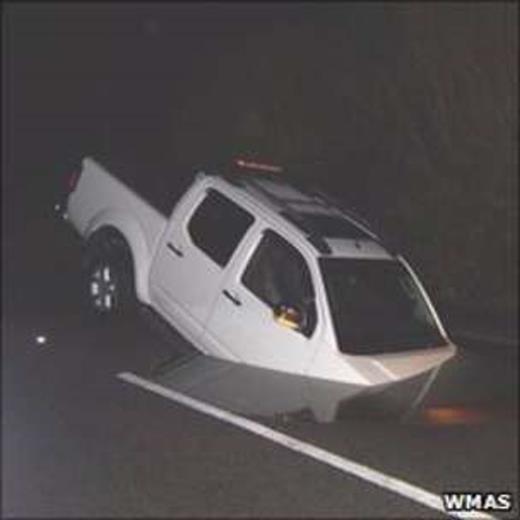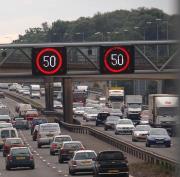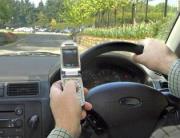 I have my own views on these. They were originally intended to warn other drivers that there was a child in the car. In itself, that has value from a safety perspective.
I have my own views on these. They were originally intended to warn other drivers that there was a child in the car. In itself, that has value from a safety perspective.
The problem is that the instant you had more than one car with the same sign in the window, they started to have less impact.
That impact was reduced still further by “little princess” and “cheeky monkey” signs – and the myriad other variations.
You still see the occasional “baby an bord” sign – which has to be one of the most pointless ones, even though I think it may have been the original (the concept came over here from Europe).
These days, just about everyone who has kids has the damned things. And all you have to do is go anywhere near a school in the morning or afternoon to see the value these signs have as far as the people displaying them are concerned. Some of the most dangerous driving imaginable comes from people picking up or dropping off their kids from/to school.
So, based on my own personal experience, they are meaningless nowadays.
The Wirral Globe has an entertaining series of exchanges via letters to the editor. I won’t reproduce all of them – just the links. But here is the letter that sparked it all off:
IT IS no good. I feel an irresistible rant coming on and must write.
I’m a former driving instructor and know I speak for many motorists in expressing my irritation with those pathetic idiots who feel the need to inform us that they have a ‘baby on board.’
For Heaven’s sake, don’t they realise that no one on the planet has the smallest interest in their reproductive status?
Recently I have seen one car advertising not only ‘baby on board’ but also ‘child on board’ and even – wait for it – “little star on board”. Pass the sick-bag!
Another proud driver felt it necessary even to inform us of the names of his three little treasures (‘Aimee on board’ etc.) Yuck!
On a serious level there are several problems with this stupid, self-important and indeed potentially dangerous practice. For example:- 1. Annoying other road users unnecessarily is an infringement of the Highway Code.
2. Sticking a notice – or worse, two or three of them – on the rear window is an excellent way of obstructing the driver’s rear view.
3. In the unfortunate event of a motorway smash, it is surely unacceptable for emergency services to have to waste time, at possible risk to themselves, searching for a non-existent passenger – for, as we’ve all noticed, there very rarely even is a baby, child or (retch!) “little star” in the vehicle at all.
Is it not high time this practice was banned by law?
What do other readers think?
He really lit the blue touch paper with that! Here are the links to the subsequent replies – and remember that at the time of writing, the responses are still coming in:
As an aside, if you ever watch Dragon’s Den, just about every episode has someone on who got pregnant, had a kid, contracted some sort of brain-melting disorder equivalent to stepping a few million years down the evolutionary ladder, and then decided that no one else had ever opened a shop selling baby stuff, designed a range of baby clothes, invented a new flavour of baby food, thought of a new way of washing nappies (or disposing of nappies), or any number of other baby-related things.
And don’t think it’s just the mothers. When I was in the rat race, you’d go to someone’s cubicle or office and wonder what the hell visitors thought when they saw all the crap on display. Painted egg boxes, coloured stones, crumpled sheets of paper with random splodges of gaudy watercolour paint all over it, photographs… People pretended to be interested – let’s face it, the only ones who could sincerely admire it would be the ones with the same degenerative brain conditions – but it was a mess. So much of a mess, in fact, that if the visitor was high-ranking and internal (i.e. likely to be able to advance the career of the person in question) all the crap would be hidden away.
But I digress. The author of that letter has a point. Those signs are not put there for the original purpose of safety. They can’t be, given how those displaying them often drive. They ARE put there to say “we’ve got a baby”!
Sticking a “baby on board” sign in the car when you have a baby – and converting it to a “little princess” or “cheeky monkey” sign when they’re old enough – is a basic routine in parenthood. It means nothing.

 One of the things I cover with my pupils when I’m explaining the use of signals is how you can be happily driving along the motorway (or any other fast road with a lot of traffic) when, all of a sudden, the traffic in front is at a complete standstill.
One of the things I cover with my pupils when I’m explaining the use of signals is how you can be happily driving along the motorway (or any other fast road with a lot of traffic) when, all of a sudden, the traffic in front is at a complete standstill. Wall, who was 18 at the time, was driving a black Suzuki Jimny she’d been given as a Christmas present. She had passed her test eight months earlier. Her mother – a driving instructor – was in the car with her. The trial is ongoing.
Wall, who was 18 at the time, was driving a black Suzuki Jimny she’d been given as a Christmas present. She had passed her test eight months earlier. Her mother – a driving instructor – was in the car with her. The trial is ongoing. I’m sorry, but this is sci-fi nonsense. No one in their right mind is going to go for this as a means of personal transport.
I’m sorry, but this is sci-fi nonsense. No one in their right mind is going to go for this as a means of personal transport. I have my own views on these. They were originally intended to warn other drivers that there was a child in the car. In itself, that has value from a safety perspective.
I have my own views on these. They were originally intended to warn other drivers that there was a child in the car. In itself, that has value from a safety perspective.